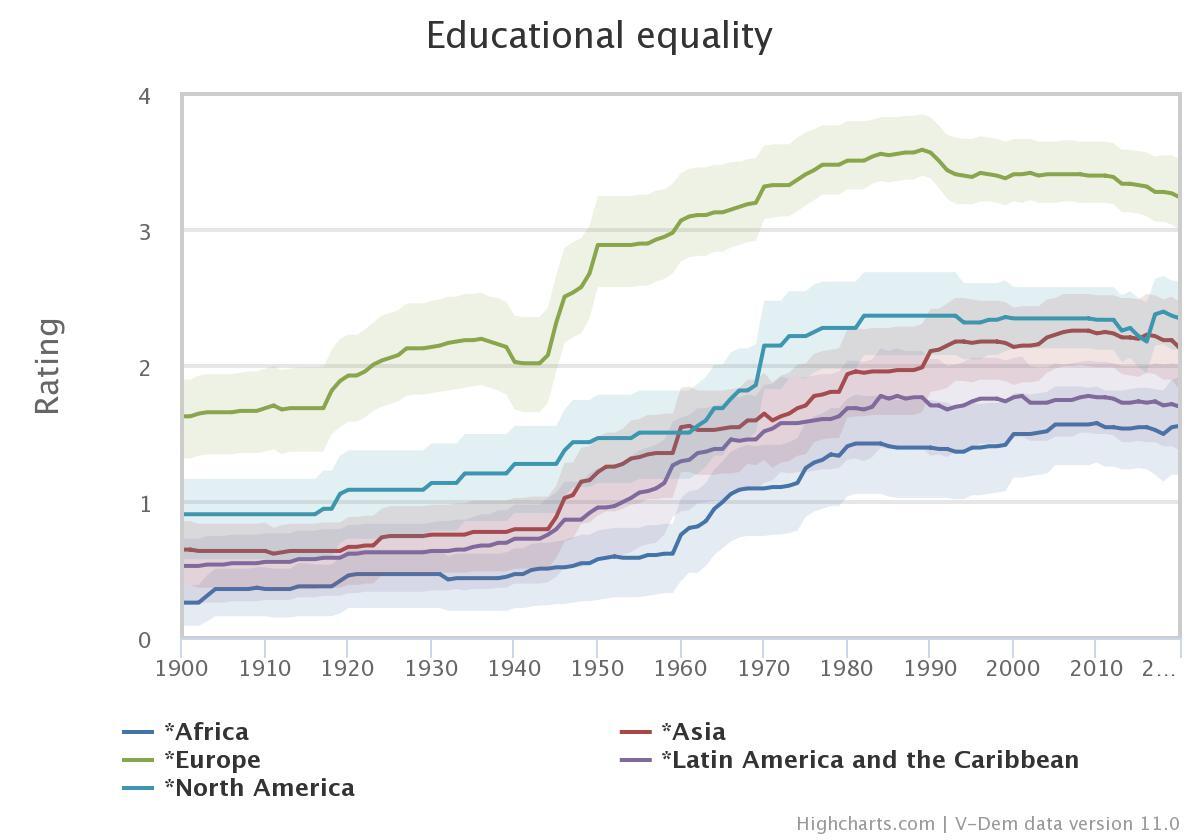Educational Equality Over the Last Century
By: Julian Voss
Apr 22, 2021
Education is key to peace, prosperity, and development. The UN International Day of Education has, since 2018, raised awareness to achieve inclusive access to high quality education across the globe.
Today’s graph summarizes the development of educational equality using V-Dem data. It displays the development of the “Educational equality” indicator for several world regions from 1950 to 2019. This indicator measures the equal provision of basic education, i.e., education sufficient to exercise basic rights as individual citizens, across the population. It ranges from extreme inequality, defined as a situation in which more than 75% of the population do not receive sufficient education, to almost universal access, meaning the exclusion of less than 5% percent of the population. It takes values between 0 and 4, where higher values indicate more equality.
Two temporal trends are worth highlighting. First, from 1950 to around 1990, there was a general improvement in equal access to basic education in all regions. Second, after 1990, the development of educational equality stagnated across all regions. For Europe, there are initial signs of an erosion of educational equality.
When it comes to disparities across regions, educational equality has been highest in European countries over the whole period. We observe some convergence between North America and Asia during the last decades, and both regions show medium levels of educational equality today. Finally, countries in Africa and Latin America are the least inclusive in terms of access to education. It is important to note that the graph does not reflect the substantial variation among sub-regions and individual countries. For example, East Asian countries have achieved higher levels of educational equality than the rest of Asia. Nevertheless, it gives a general overview of broader trends in different parts of the world.
Basic education forms an important aspect of comprehensive definitions of democracy. Today’s graph shows that, despite substantial improvements, a large share of the population still does not enjoy access to a minimally acceptable level of education. Young women and girls are most affected. They face persistent barriers to education due to gender norms, and factors like poverty and insecurity can exacerbate exclusion. This demonstrates the importance of today’s UN observance and related efforts for better and more inclusive education.
If you want to create your own graphs using V-Dem data, visit v-dem.net.


